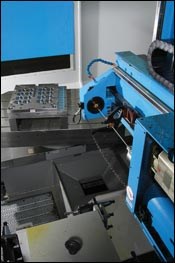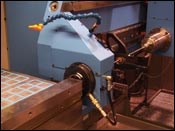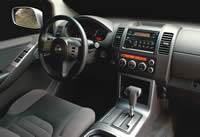A Workholding Solution for Gun Drilling
Gun drilling is one area for which moldmakers have been slow to accept permanent electro magnets, which can reduce workholding and toolholding setups by 50 to 70 percent.
Gun drilling is an integral part of the moldmaking process. When deep holes—such as water lines—need to be drilled, the gun drill is the tool for the job.
Oftentimes holes need to be drilled through multiple faces and at odd angles, and until recently this required four setups to complete a block. The block of steel would be located on the bed of the machine, clamped down using multiple vises, toe clamps, strap clamps or another form of contact workholding. Unfortunately, when another face of the same block requires an additional gun drilled hole, the part needs to be repositioned and the clamps reattached. This process wastes valuable machine time. In addition, many large pieces and oddly shaped workpieces are difficult to clamp, especially if they overhang the machine table.
Permanent Electro Magnetic Workholding
Since the introduction of permanent electro magnetic workholding in the early to mid nineties, the mold industry has had the most acceptance—using them for every process from roughing to hard milling—however, one area for which they have been slow to accept them has been gun drilling.
Permanent electro magnets use only a brief pulse of electricity to change the state of the Alnico magnets, which are positioned under the poles on the surface of the magnet. This pulse of electricity turns the magnet on. It will remain on indefinitely until another pulse of electricity is supplied to turn the magnet off. This feature makes them failsafe and an ideal clamping method for pallet changers and single-station machines.
Holding a workpiece on a magnet provides accessibility to up to five faces of a workpiece, which is significantly beneficial when horizontally machining or gun drilling. A part can be set up once then indexed on the machine table to obtain access to all four sides. There is no interference from clamps. When odd angles are required, a magnet can be easily mounted to a Sine plate without the need for additional clamps.
Test Case
Hasco Mold (Arden, NC)—a worldwide provider of molds and components—expanded its use of permanent electro magnetic workholding into its gun drilling process in early 2007 after Shop Foreman Thomas Fortner considered a (24" x 24") permanent electro magnet and a CAT 40 hydraulic toolholder for improved efficiency and cost competitiveness.
This combination is ideal for gun drilling because the hydraulic holder evenly and accurately clamps the shank of the tool—this is difficult to do with other toolholding technologies without distorting the tool and causing premature tool breakage. While the magnet evenly clamps the workpiece, it also provides access to up to five faces of the workpiece, reducing the number of setups.
Examining the Permanent Electro Magnet Option
Fortner had four questions about gun drilling on a magnet: (1) Will the magnet be strong enough to keep the part from being pushed off the magnet? (2) Will there be a problem evacuating chips out of the hole? (3) Will the magnetic field pull the tool down or cause it to drift? and (4) Will there be premature tool wear or breakage?
Clamping Force
Permanent electro milling magnets provide over 200 pounds of clamping force per square inch with zero air gap. The thicker the Alnico magnet, the better the magnet performs on an air gap (non-ground or uneven workpieces). Thinner magnets are designed only for ground flat steel. Therefore, on a two-inch square magnetic pole (four square inches) over 800 pounds of clamping force is generated. However, in order for a magnet to actually clamp a part, there must be equal amounts of both north and south polarity. A magnet will only clamp as much as the amount of balanced magnetic polarity applied to the workpiece.
For example, if a workpiece is covering 70 percent of north poles and 30 percent of south poles, the resultant clamp force will only be equal to 60 percent of the contact area. The extra 40 percent of north polarity will only result in stray magnetic flux, which will cause chip adhesion. A workpiece with one square foot of magnetic contact surface will generate over 28,000 pounds of magnetic clamp force. If the workpiece is not balanced magnetically (e.g., 70/30), 40 percent loss will result in over 11,000 pounds less clamping force.
Gun drilling generates parallel forces to the magnetic field. A magnet’s ability to hold is approximately 20 percent parallel to the field as to 100 percent directly perpendicular to the field. In gun drilling, not only is there the force of the tool, but also the added force of the drill bushing. Therefore, on a part with one square foot of magnetic contact surface and over 28,000 pounds of clamping force, it will only require approximately 6,000 of push force to move the part.
This raised concerns for Hasco because its hydraulically-actuated drill bushing pushes more than 600 pounds of pressure alone against the part in conjunction with the tool pressure. Would it move the part? After more than a year of use, not a single part has moved.
No Tool Drifting or Deflection
When a magnetic field is balanced, stray magnetic flux and excessive chip adhesion does not interfere with the machining process. On a two-inch square magnetic pole, the magnetic field height is approximately 0.500" high above the magnet’s surface. Hasco has been able to gun drill within 0.125" of the magnet’s surface without tool drifting, deflection or chip adhesion within the hole. Not a single tool has been broken.
Less Tool Wear
In addition to the free access to all sides of the workpiece, a magnet generates an even clamping force along the entire bottom (contact) face of the workpiece. Conventional clamps only apply point contact and leave the center of the workpiece exposed to vibration and deflection, whereas the magnetic workholding securely holds the workpiece and dampens vibration for less wear on the tool.
Setup and Changeover Reduction
According to Fortner, moving from conventional fixturing to the magnet has reduced setup by 70 percent, reducing four steps down to two. With the magnet, the part is positioned on the table and the magnet is energized. Depending upon the size of the part and the location of the holes determines whether or not pole extensions are needed to provide clearance for the spindle. If the part can be reached from all four sides, then the operator only has to set the part up once. There is no need to stop the process and move the clamps. If a shop chooses to use top tooling more frequently to access the workpiece, then a higher density/higher power magnet is required. These magnets are thicker than normal permanent electro magnets, because they use thicker Alnico magnets.
Fortner also believes that switching to the hydraulic holder has reduced their tool changeover by 80 percent. Hasco runs about 1800 psi through the spindle. Previously Hasco had pressed the gun drill in and out of the holder and changed the bearings, but with the hydraulic holder they simply loosen the hydraulic actuation screw and change out the gun drill.
Additional Applications to Maximize Machine Potential
The magnet has also allowed Hasco to use the gun drill as a four-axis horizontal mill. Fortner claims that the magnet allows them to fully utilize the machine’s ability to mill, drill and tap, in addition to the gun drill features. He says, “The machine’s ability has been the limiting factor, not the magnet’s ability to hold the workpiece.”
Summary
Today’s mold manufacturers need to use every possible advantage to make the machines they already own operate to their full potential. Oftentimes a new machine is not the answer, reducing the workholding and toolholding setups by 50 to 70 percent can be enough of an advantage.
Related Content
Tips for Tackling Mold Design, Machining, Cutting Tool and Wear Challenges
Tips for tasks ranging from reducing risk in part design and taking advantage of five-axis machining to refining cutting tool performance and reducing wear with guiding and centering systems.
Read MoreSolving Mold Alignment Problems with the Right Alignment Lock
Correct alignment lock selection can reduce maintenance costs and molding downtime, as well as increase part quality over the mold’s entire life.
Read MorePrecision Meets Innovation at IMTS 2024
After attending IMTS, it's clear that the integration of advanced technologies is ready to enhance precision, efficiency and automation in mold manufacturing processes. It’s a massive event, so here’s a glimpse of what the MMT team experienced firsthand.
Read MoreMachining Center Spindles: What You Need to Know
Why and how to research spindle technology before purchasing a machining center.
Read MoreRead Next
Use Magnetic Chucks to Reduce Your Cost of Operation
By evaluating magnetic devices as a workholding alternative for moldmakers, cost and leadtime can be reduced.
Read MoreReasons to Use Fiber Lasers for Mold Cleaning
Fiber lasers offer a simplicity, speed, control and portability, minimizing mold cleaning risks.
Read MoreHow to Use Strategic Planning Tools, Data to Manage the Human Side of Business
Q&A with Marion Wells, MMT EAB member and founder of Human Asset Management.
Read More

























